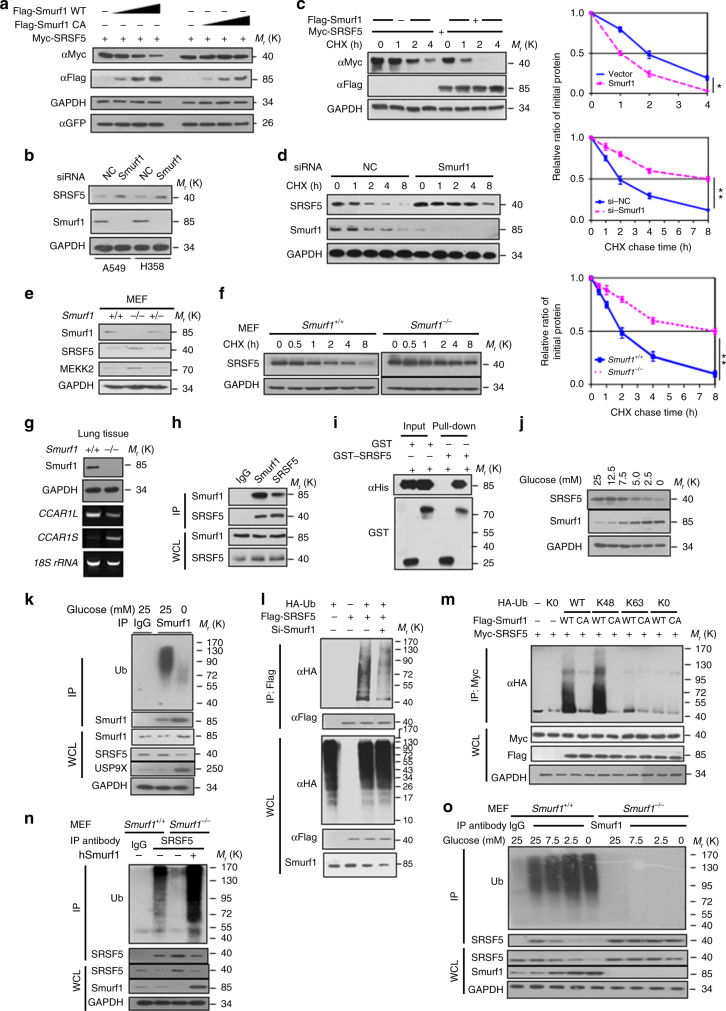Fig. 6.
Smurf1 targets SRSF5 for degradation upon low glucose intake. a Smurf1 negatively regulates SRSF5 protein level in a dose-dependent manner. HEK293T cells were transfected with increasing amounts of Flag–Smurf1 WT and or Flag–Smurf1 CA vectors along with Myc-SRSF5 vectors for immunoblotting analysis. b Smurf1 knockdown increases the expression level of SRSF5 in A549 and H358 cells. c HEK293T cells transfected with the indicated plasmids were treated with CHX and harvested at the indicated times for western blot. d A549 cells transfected with siSmurf1 or control as previously described were treated with CHX for the indicated time to determine endogenous SRSF5 expression levels. e Expression analysis of endogenous SRSF5 protein in Smurf1+/+, Smurf1+/−, and Smurf1−/− MEFs were revealed by immunoblotting. f Half-life analysis of SRSF5 in Smurf1+/+ and Smurf1−/− MEFs. g Expression levels of CCAR1 splice variants were examined in the lung tissues of Smurf1+/+ and Smurf1−/− mice by RT-PCR. h Co-immunoprecipitation assay revealed that endogenous SRSF5 interacts with Smurf1 in A549 cells. i GST pull-down assays were performed to indicate the direct interaction between Smurf1 and SRSF5. j The expression level of Smurf1 reversely correlates with SRSF5 when glucose concentration declines. k Glucose deprivation dampens endogenous Smurf1 ubiquitylation. A549 cells were maintained in medium with or without 25 mM glucose. The endogenous Smurf1 ubiquitylation level were determined by IP-western. l Knockdown of Smurf1 decreases SRSF5 ubiquitylation. HEK293T cells with or without siSmurf1 were transfected with indicated plasmids. The ubiquitylation of SRSF5 was determined by IB analysis. m Smurf1 promotes the K48-linked poly-ubiquitylation of SRSF5 in vivo. The SRSF5 ubiquitylation linkage was analyzed in HEK293T cells transfected with indicated plasmids. n Ectopic expression of hSmurf1 by lentiviral infection rescues the ubiquitylation of endogenous SRSF5 in Smurf1−/− MEFs. o Smurf1 ubiquitylates SRSF5 by sensing glucose concentration. Smurf1+/+ and Smurf1−/− MEFs were maintained under various glucose concentrations and ubiquitylated SRSF5 was visualized. Blots are representative of three independent biological replicates. Error bars in c, d, f show s.e.m. from three independent experiments (**P < 0.01, two-way ANOVA test). Unprocessed original scans of blots are shown in Supplementary Fig. 9

